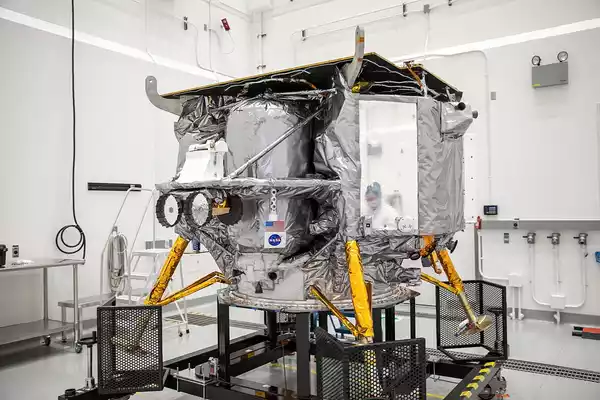Private lunar lander Peregrine Mission-1, the first US spacecraft due to land on the moon’s surface since Apollo 17 in 1972, suffered an “anomaly”.
About Peregrine Lander 1:
- The Peregrine lunar lander, developed by a US-based lunar logistics company, Astrobotic, is a robotic spacecraft designed to deliver payloads to the moon or its orbit.
- Its inaugural mission, Peregrine Mission One, aimed to transport scientific equipment to the moon’s Gruithuisen Domes region, supporting NASA’s Artemis programme for sustained human presence on the moon.
- Payloads included instruments from the Mexican and German space agencies and contributions from various universities, companies, and individuals globally.
- Notable payloads: A physical coin containing one bitcoin, and a Japanese “lunar dream capsule” with messages from children worldwide.
Launch and Initial Complications:
- Peregrine launched aboard the new methane-fuelled Vulcan Centaur rocket from Cape Canaveral, Florida.
- Post-launch, the lander faced difficulties in reorienting its solar panels for battery charging, leading to propulsion system issues and critical propellant loss.
Challenges in Mid-Mission:
- Despite successful solar panel reorientation, further problems emerged, including insulation damage and an unsustainable fuel leak.
- The leak affected the thrusters of Peregrine’s attitude control system, limiting their operational lifespan.
Current Status and Future of the Spacecraft:
- Scheduled lunar landing on 23 February appears increasingly unlikely due to propulsion challenges.
- Astrobotic’s focus shifted to bringing Peregrine as close to the moon as possible before losing power.
- If abandoned, Peregrine will become space debris, carrying DNA samples and remains of notable individuals, including former US presidents.
Potential Salvageable Outcomes:
- Despite the compromised mission, testing of onboard scientific instruments in space’s harsh environment offers valuable data for future missions.
Impact on Future Collaborative Missions:
- Peregrine’s challenges underscore the risks of private lunar missions, following previous failures like the Beresheet and Hakuto-R landers.
- NASA’s future lunar missions involve multiple private spacecraft, emphasizing high-risk, high-reward strategies.
- Peregrine’s mission, despite setbacks, contributes to lunar lander development and fosters cost-effective, sustainable lunar exploration.
Ref: Source
| UPSC IAS Preparation Resources | |
| Current Affairs Analysis | Topperspedia |
| GS Shots | Simply Explained |
| Daily Flash Cards | Daily Quiz |


